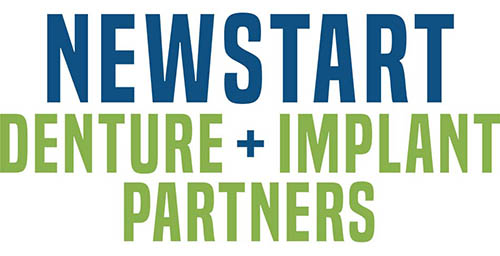Dental implants are a trusted way to replace missing teeth with results that look and feel natural. If you are planning treatment, you are likely wondering about the healing time for dental implants and when you can return to normal routines. This guide explains each stage, from the initial surgery through the final tooth restoration, the factors that affect recovery, and practical steps to support comfort and long-term success. You can use this roadmap to prepare confidently and know what to expect at each visit.
Introduction to dental implants
Dental implants act as an artificial tooth root that supports a crown, bridge, or denture. The titanium post integrates with your jawbone, which helps prevent bone loss and preserves facial structure. For one tooth, several teeth, or a complete arch, implants can replace missing teeth without shaping neighboring teeth as a bridge would. Many patients choose implants to improve chewing ability, protect oral health, and enjoy a natural looking smile.
NewStart Denture provides evaluation, implant placement, and dental implant restorations in Raleigh, NC.
Pre-implant procedure
A successful outcome starts with a detailed assessment. Your clinician will:
- Review oral health, gum status, and overall health, then take 3D images to evaluate bone density and bone structure.
- Plan for tooth extraction when needed, sometimes on the same day as implant surgery, depending on bone quality and infection risk.
- Recommend bone grafting if you do not have adequate bone to support the implant. Grafting strengthens the site so the implant can integrate securely.
- Discuss temporary options, such as removable dentures or partial dentures, to maintain your smile during healing.
If a tooth needs to be removed as part of your implant procedure, we also provide tooth extractions.
Dental implant surgery
Most implant surgeries are completed in a dental office under local anesthesia, which keeps the area numb for a comfortable, pain free experience. During initial surgery, the clinician places the implant post into the jawbone, then a small cover or healing component is positioned and the gum is closed. In some cases, a same day temporary tooth can be placed, but many patients benefit from a short waiting period to protect the site and encourage stable integration.
For multiple implants to replace several teeth, your team will stage care to keep healing on track. Your plan may include traditional implants or mini implants based on anatomy, bite force, and other factors.
Implant procedure and healing timeline
Exact timing varies by case, but most patients follow a similar path:
- Days 1 to 2 (immediate recovery): Expect mild swelling and tenderness. Apply cold compresses, avoid hot liquids, and rest. Take any prescribed medicines as directed.
- 1 to 2 weeks (soft tissue healing): The gum tissue closes around the implant site. Stitches often dissolve or are removed at a follow up visit.
- 6 to 12 weeks (early bone integration): The bone begins to attach to the implant surface.
- 3 to 6 months (osseointegration): The implant fuses with the jawbone and becomes strong enough to support biting forces. Integration is an essential step in long term success, and your dentist will confirm readiness before the final steps of care.
- Abutment placement and impressions: An abutment connects the implant to the new tooth. Your team will take precise scans or molds for the custom crown, bridge, or denture.
- Final tooth restoration: The lab-made crown or other restoration is attached and shaped to fit your bite and match your natural teeth.
Healing process and what to expect
Mild discomfort and swelling are common for 24 to 72 hours. Most people return to desk work within 1 to 3 days, then resume exercise gradually as advised. If you had bone grafting, you may need a longer rest period. Good implant care in the first week protects the site while it strengthens. Call your office if pain increases after day 3, if swelling worsens, or if you see signs of infection.
Factors that influence recovery time
Recovery time depends on several clinical and lifestyle factors:
- Bone density and bone structure: Stronger bone usually speeds integration. Bone grafting can add time but improves stability.
- Number and location of implants: Multiple implants or a complete arch restoration can extend healing compared with an implant for one tooth.
- Gum health: Healthy gums support healing and reduce risk of complications.
- Smoking and vaping: Nicotine lowers blood flow, which delays healing and increases implant risk.
- Teeth grinding: Nighttime clenching can overload early implants. A night guard can protect your new teeth during integration.
- Overall health and medicines: Conditions like diabetes or medications that affect bone may change timelines. Share your full health history with your clinician.
Gum disease considerations
Gum disease is a leading risk factor for implant complications. Before implant placement, your dentist will treat active gum infection and review home care. Proper oral hygiene, including regular brushing, flossing, and professional cleanings, lowers inflammation and helps implants last. For a patient friendly overview, see the ADA’s overview of dental implants.
Facial structure and long term benefits
Teeth roots stimulate jawbone. When a tooth is missing, the bone can shrink over time, which may change facial structure. Implants act like a tooth root, help reduce bone loss, and support lip and cheek contours. Many patients report better chewing ability and confidence after they replace missing teeth, which supports both function and a beautiful smile.
Frequently asked questions
Soft tissue usually heals in about 1 to 2 weeks. The implant and jawbone then complete osseointegration over 3 to 6 months, depending on bone density, grafting, and overall health.
Plan to rest the day of surgery and the next day. Many patients resume light activity within 48 to 72 hours. Avoid heavy lifting and strenuous exercise for several days, or longer if you had bone grafting.
The body accepts the titanium post as it fuses with bone. This integration period usually takes several months. Your dentist will test stability before placing the abutment and the final restoration.
Discomfort is typically mild to moderate for 2 to 3 days and is managed with medication, ice packs, and rest. Because implant surgery uses local anesthesia, the procedure itself is generally pain-free.
Clinicians follow spacing guidelines to protect bone and gum tissue. A common standard is about 3 mm between two implants and at least 1.5 to 2.0 mm between an implant and neighboring teeth. Your surgeon will tailor spacing to your anatomy using imaging and surgical guides.
Mini implants can sometimes be placed and used to stabilize a denture on the same day, especially for a lower denture. Case selection is critical, and your dentist will review bite forces, bone quality, and risk factors before recommending immediate use.
Because mini implants have a smaller diameter, they may be less suited for areas with heavy bite forces or for long span bridges. They also may not last as long. Your clinician will compare traditional implants and mini implants to match your needs.
Pricing depends on the number of implants, whether you need tooth extraction or bone grafting, the type of abutment and crown, and lab materials. Insurance coverage varies by plan. After assessing your situation, we can provide a full cost estimate.
Averages vary because each plan is unique. Factors include bone grafting, temporary teeth, final materials, and maintenance needs. Request a consult to compare choices for affordable dental implants that fit your goals.
Mini implant fees depend on your anatomy, the restoration they support, and whether they are used to stabilize a denture. Your treatment coordinator will review options and payment plans for affordable dental implants.
Care tips for a smooth recovery
Follow these care tips to support comfort and integration:
- Keep the area clean: Starting the day after surgery, gently rinse with warm saltwater 2 to 3 times daily. Brush and floss the other teeth carefully. Around the implant, use a soft brush and follow your dentist’s instructions for oral hygiene.
- Eat soft, cool foods: Choose yogurt, eggs, pasta, fish, and smoothies for the first 48 hours. Avoid hot liquids, seeds, chips, and sticky foods until your dentist says the site is ready.
- Control swelling: Apply a cold compress for 10 minutes on, 10 minutes off during the first day.
- Do not smoke or vape: Nicotine slows healing and increases complications.
- Protect against teeth grinding: If you clench at night, ask about a night guard to reduce pressure on new implants.
- Keep follow up visits: Your dentist monitors healing, confirms osseointegration, and times the abutment and crown for the best result.
- Maintain proper oral hygiene long term: Regular brushing, flossing, and cleanings help prevent gum disease around implants.
Treatment options at NewStart Denture in Raleigh, NC
NewStart Denture offers comprehensive implant care, from planning and implant placement to final restorations. Additionally, we provide implant restorations including custom crowns and bridges designed to blend seamlessly with your natural teeth, ensuring a beautiful and functional result.
If a tooth is not restorable, our team can remove it gently and plan the next step toward new teeth with implants.
Your roadmap to a confident new smile
Healing time for dental implants includes 1 to 2 weeks for the gums to mend and about 3 to 6 months for the implant to fuse with bone. With careful planning, thoughtful at-home care, and routine checkups, implants can be a long-lasting solution to replace missing teeth. If you are in Raleigh, NC and want affordable dental implants tailored to your needs, our team at NewStart Denture will guide you through every step, from evaluation to final tooth restoration, so you can get back to your favorite foods and your new smile with confidence. Contact us today to schedule a consultation.

 Contact Us Today
Contact Us Today
 NewStart Denture & Implant Partners
NewStart Denture & Implant Partners